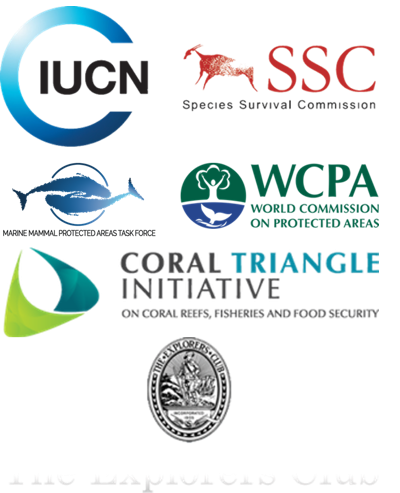Marine Mammal Species Biodiversity in Raja Ampat
2011-2015 By Benjamin Kahn
Dec 2015.
Raja Ampat is a world-class dive destination and is famous for its exception reef species diversity as well as (oceanic) manta cleaning stations, relatively abundant sharks and pelagics. Overall coral cover and reef health are stunning in many places. So its reputation as a must-see for anyone interested in our oceans is rightly deserved.
Raja is an amazing place for all these reasons and more.
What is less well known is that Raja is also a hotspot for whales and dolphins. We have been fortunate to have worked there almost every year since 2007[1] to conduct cetacean Rapid Ecological Assessments (in collaboration with TNC and CI) give training workshops and assist whenever possible with the design and establishment of the Marine Protected Area network that is now in place to ensure cetacean habitats like the Dampier Strait are also represented. This region includes many important habitats for whale species such as Bryde’s and sperm and pilot whales. Resident coastal and oceanic dolphin species are commonly seen, indicating abundant prey resources. Rare sightings include blue whales and pygmy sperm whales.
The table below summarizes the species sightings to date in a basic annual species list. This list is compiled from our 2011-2015 “Whale and macro” expeditions conducted on the Pindito live–aboard. These expeditions are a unique mix of what Raja has to offer: whale watch/dive/snorkel/seabird/combined reef and oceanic ecology.
In short, the total species sighted for Raja Ampat stands at 16 spp. We didn’t encounter any new species for the last 2 years. This indicates that we are levelling off on the new species count. The species that we encounter each year are more common than those we sight less frequently. We do expect a few more oceanic species (especially beaked whales). This list does not include the Indo-Pacific humpbacked dolphin, for example, Sousa chinensis (or Sousa sahulensis). These “pink dolphins” inhabit the vast Mayalibit Bay that cuts through central Waigeo. But our expeditions don’t include this enclosed bay and focus instead on the Dampier Strait, Mansuar Canyon, Batanta, Penemu, Gam and the northwestern waters as we island hop towards Wayag. On several days we head out towards deep open water beyond the 200m-depth contour where we can deploy our hydrophones. So over time, this table will get updated with more species and increased marine mammal diversity for Raja Ampat.
Obviously, we record a lot of fine-scale data for each sighting such as group size, group composition, surface intervals, blow rates, species associations and a suite of behaviours. On rare occasions, we snorkel with friendly whales (and twice already we had jaw-to-jaw encounters with friendly orcas, yes in Raja Ampat!).
Other observations relate other large marine life we encounter along the way (jumping billfish, mantas, turtles, oceanic sunfishes, hammerhead sharks, etc.). We also collect data that relates to our on-going work on threat assessments to threat assessments such increasing plastic debris. Our initial outcomes indicate that plastic trash concentrates in current lines that are prime foraging habitats for Raja’s Bryde’s whales and seabird). Oil and gas developments nearby and exploratory seismic surveys (ocean noise) are other concerns.
[1] Kahn, B. 2007. Marine mammals of the Raja Ampat Islands: Visual and Acoustic Cetacean Survey & Training Program. Technical Report AE07/01 to Conservation International – Indonesia Program. 57 pp.






